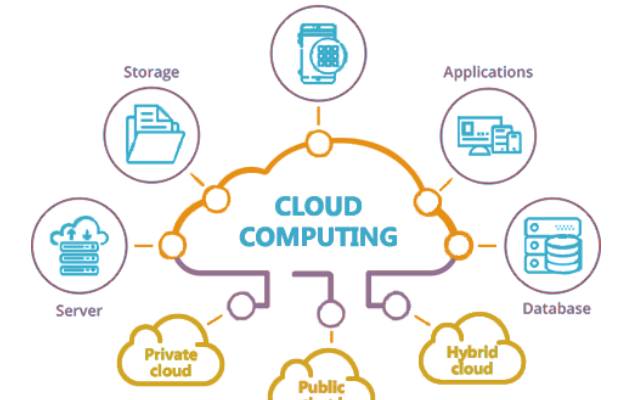Any firm thinking about moving to the cloud must recognize that the benefits may not last as long as expected without a plan that considers security, performance, and connection issues and how cloud computing fits into the broader business strategy.
Large enterprises, in particular, will need to be able to incorporate cloud computing into their current IT infrastructure and applications. Few businesses are prepared or willing to start from scratch, and most won’t migrate all of their operations to the cloud at once. It is, therefore, crucial to prepare for the upcoming integration problems.
There may even be corporate procedures and software that never leave the premises. This means that connecting on-premise to on-premise, on-premise to cloud, and cloud-to-cloud may always be necessary, making integration more complex than ever.
Business integration necessitates simplification as enterprise IT becomes more liberated from continuous infrastructure administration to concentrate on new areas for innovation. With this in mind, let’s take a closer look at how we advise our customers when it comes to the cloud.
Make a strategy and a list of (realistic) goals in advance
Unable to clearly articulate a long-term cloud strategy or how it links to their broader business, several companies are launching into the space. Shared knowledge of the resources available for implementation and maintenance, as well as reasonable goals and priorities, should be established as part of any project. Even if productivity improvements of at least 50% are promised by cloud computing, minimizing complexity and expense requires planning and strategy.
Learn from the mistakes of those who came before you
Early adopters took a solitary approach to cloud computing. The services were easily available, easy to consume, and affordable. There weren’t many implementation problems. However, for organizations where existing IT infrastructure often serves key business processes, the “detached” cloud might give only short-term value and potentially necessitate future re-implementation or migration. Although a solo method risk developing silo-ed apps, an integrated cloud strategy will yield long-term outcomes.
Save money upfront
Risk reduction is one of the reasons firms use cloud computing and software as a service (SaaS). When using a pay-as-you-go model, you only pay for the services you use and can easily turn the system off if it does not serve your needs. Don’t put your return on investment at risk by purchasing pricey software licenses; instead, your integration solution should use a flexible subscription model, much like the rest of your cloud computing investment.
Pay attention to autonomy
On-premise application integration has always needed a team of IT experts with in-depth knowledge of the underlying application frameworks and processes. Business users who lack domain expertise and must rapidly and easily connect data with other corporate systems should manage SaaS applications. By reducing development, implementation, and maintenance expenses, cloud integration should enhance the model and free customers from concentrating on their core businesses.
Addressing safety issues
Analysts report that security is the top issue for roughly 75% of CIOs and IT executives when it comes to cloud computing. Integrating cloud computing requires transferring sensitive data between on-premise networks and the cloud. Therefore, security must be ensured. Find out whether standards are supported for safeguarding the data in transit while evaluating an integration solution. Remember that when businesses transfer more tasks to the cloud, more sensitive data will move to and from the cloud.
Ensure the data’s availability and performance
Today’s popular cloud computing services offer performance and availability levels that surpass internal infrastructure, frequently with 99.9 percent uptime or higher. When developing a cloud strategy, establish all unique architecture requirements, identify integration needs for each system (real-time, near-real-time, batch), and the number of concurrent requests to be handled. Ensuring that data won’t be lost if the cloud or on-premise source fails is essential to success. (Yes, a backup strategy is required for the cloud.)
Boost available connectivity options
The term “cloud computing” refers to a broad range of online services, including SaaS and platform-as-a-service (PaaS), and Web 2.0 services like Google Docs, LinkedIn, and Twitter. By the end of 2010, one-quarter of business process improvement initiatives will use data from enterprise social computing solutions, according to research1 from Saugatuck Technology. Beyond traditional enterprise applications, legacy systems, and databases, connectivity requirements will continue to advance to include contemporary Web services and Web 2.0 APIs.
Deploy a solution for identity and access management.
Unauthorized access is the fourth top danger to public cloud security in the analysis by CloudPassage (and growing – 53 percent, up from 42 percent in 2022). A top-notch identity and access management (IAM) system can reduce these hazards even though hackers’ techniques for accessing sensitive data are getting more advanced with each new attack.
The search for an IAM solution that enables enterprises to design and enforce access controls based on the least privilege is advised by experts. Additionally, these regulations must be predicated on role-based permissions. Even if hostile actors succeed in stealing usernames and passwords, multi-factor authentication (MFA) can nevertheless lower the risk of access by them to sensitive data.
Additionally, businesses might want to search for an IAM solution that operates in hybrid settings that include cloud deployments and private data centers. By doing this, authentication for end users may be made simpler, and security personnel will have it easier to ensure that they are implementing uniform regulations throughout all IT environments.
Solving the Integration Puzzle
With good reason, the current economic climate is pushing enterprises toward cloud computing. Nobody can deny that the cloud offers value. Its disruptive potential has already been established. The lack of enterprise-wide integration is the cloud’s “Achilles heel,” though. For the foreseeable future, integrating cloud-based data with on-premises databases and applications is the only way to fully realize its potential.
Integration is essential to the success of today’s enterprise cloud projects since they demand decoupled data systems cooperating without the requirement for employees or other resources to set them up and manage them. Most businesses cannot or will not immediately forsake their current IT investments in favor of the cloud.
Instead, a gradual transition of company operations to the cloud is more likely to occur over time, acting as ongoing proof of concept. More tasks will go to the cloud as it fulfills its promise as a computing model. Failure to execute long-term strategy and goals in advance will result in complexity and a decreased ROI. Simply said, integration should not be a last-minute decision.
Guest Post Service By www.guestarticlehouse.com




